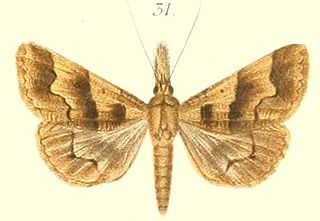
The Arundinoideae are a subfamily of the true grass family Poaceae with around 40 species, including giant reed and common reed. Unlike many other members of the PACMAD clade of grasses, the Arundinoideae all use C3 photosynthesis. Their sister group is the subfamily Micrairoideae.

Ammannia gracilis is a species of flowering plant in the family Lythraceae. It is native to Africa.

Ammannia is a genus of around 100 species of plants often referred to as redstems from wet areas in America, Africa, Asia, Australia and Europe. Several species are grown as decorative plants in aquariums.

Ammannia coccinea is a species of flowering plant in the loosestrife family known by several common names, including valley redstem, scarlet toothcup, and purple ammannia. It is native to most of the contiguous United States, with the exception of the Pacific Northwest and New England. It is generally found in moist areas, such as riverbanks and pond margins. It is weedy in some areas. This is an annual herb growing erect to heights approaching one meter or lying along the ground. Leaves are linear in shape, up to 8 centimeters long, and green to shades of deep red in color. The inflorescence is a cluster of 3 to 5 flowers growing in the leaf axils along the upper part of the stem. The rounded flower has small rose to lavender petals each a few millimeters long and protruding stamens with yellow anthers. The fruit is a rounded capsule up to half a centimeter wide containing many tiny seeds.

Ammannia robusta is a species of flowering plant in the loosestrife family known by the common name grand redstem. It is widespread across much of North America with additional populations in southeastern Brazil.

Ophyx is a genus of moths of the family Erebidae.
Crinipes is a genus of plants in the Poaceae−grass family native to central Africa.

Triraphis is a genus of African, Arabian, Australian, and Brazilian plants in the grass family. Needlegrass is a common name for plants in this genus.
A. gracilis may refer to:

Artelida crinipes is the species of the Lepturinae subfamily in long-horned beetle family. This beetle is distributed on island of Madagascar.

Ammannia baccifera, also known as the monarch redstem or blistering ammannia is a species in the family Lythraceae. It is widespread in the tropical regions of Asia, America and Africa. It has been naturalized in Spain. It is annual and herbaceous, and can be found in marshes, swamps, rice fields and water courses at low elevations. It is considered endangered in Israel, but because it is widespread and common elsewhere, the IUCN considers it to be 'Least Concern'. The plant Ammannia baccifera Linn. is erect, branched, smooth, slender, annual, more or less purplish herb 10 to 50 centimeters in height. The stems are somewhat 4-angled. The leaves are oblong, oblanceolate, or narrowly elliptic, about 3.5 centimeters long – those on the branches very numerous, small, and 1 to 1.5 centimeters long – with narrowed base and pointed or somewhat rounded tip. The flowers are small, about 1.2 millimeters long, greenish or purplish, and borne in dense axillary clusters. The capsules are nearly spherical, depressed, about 1.2 millimeters in diameter, purple, and irregularly circumscribes above the middle. The seeds are black.

Ammannia multiflora, commonly known as many-flower ammannia and jerry-jerry in Victoria, is a species in the family Lythraceae. It is widespread in Asia, tropical and sub-tropical Africa and Australia. It can be found in shallow water and damp heavy soils.
Ammannia verticillata is a species in the family Lythraceae. It is found in central and southeast Asia, and is naturalized in southern Europe. It grows in wet places such as marshes, river banks and rice fields.
Ammannia arnhemica is a species in the family Lythraceae that is endemic to northern Australia.
Ammannia auriculata, commonly known as eared redstem, is a species in the family Lythraceae that is found in tropical and subtropicalt areas around much of the world.
Ammannia fitzgeraldii is a species in the family Lythraceae that is endemic to northern Australia.
Ammannia muelleri is a species in the family Lythraceae that is endemic to northern Australia.
Ammannia striatiflora is a species in the family Lythraceae that is endemic to northern Australia.








